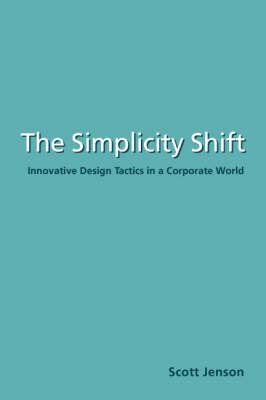
The Simplicity Shift
Innovative Design Tactics in a Corporate World
Seiten
2002
Cambridge University Press (Verlag)
978-0-521-52749-1 (ISBN)
Cambridge University Press (Verlag)
978-0-521-52749-1 (ISBN)
The Simplicity Shift is about shifting a company's culture to value, discover and implement Simplicity, creating designed products.
High tech products have historically had notoriously poor design. Fortunately, companies have recently started to embrace user centered design practices. This transition hasn't been smooth, however, as many companies have trouble transferring good design into final, shipping products. There is a political/cultural disconnect between the corporate desire for good design and the corporate culture that implements it. The Simplicity Shift is about shifting a company's culture to value, discover and implement Simplicity, creating well designed products. For most companies, Product Design is not a first class citizen, it is something locked into a 'design department' and done as a subtask of a larger sequential process. For companies to truly create breakthrough, easy to use products, they must elevate design so that its terms and tools are shared by everyone in the team. Design is a strategic tool that must become a part of how everyone in the company thinks, acts, and, most importantly, makes decisions.
High tech products have historically had notoriously poor design. Fortunately, companies have recently started to embrace user centered design practices. This transition hasn't been smooth, however, as many companies have trouble transferring good design into final, shipping products. There is a political/cultural disconnect between the corporate desire for good design and the corporate culture that implements it. The Simplicity Shift is about shifting a company's culture to value, discover and implement Simplicity, creating well designed products. For most companies, Product Design is not a first class citizen, it is something locked into a 'design department' and done as a subtask of a larger sequential process. For companies to truly create breakthrough, easy to use products, they must elevate design so that its terms and tools are shared by everyone in the team. Design is a strategic tool that must become a part of how everyone in the company thinks, acts, and, most importantly, makes decisions.
1. Motivation; 2. Vocabulary; 3. Why is bad design such good business?; 4. User blindness; 5. Design interlude - redesigning a timer thermostat; 6. Feature blindness; 7. Design interlude - redesigning a digital jukebox; 8. Innovation blindness; 9. Design interlude - mobile phones; 10. Conclusion.
| Erscheint lt. Verlag | 18.11.2002 |
|---|---|
| Zusatzinfo | Worked examples or Exercises |
| Verlagsort | Cambridge |
| Sprache | englisch |
| Maße | 152 x 229 mm |
| Gewicht | 250 g |
| Themenwelt | Informatik ► Software Entwicklung ► User Interfaces (HCI) |
| Wirtschaft ► Betriebswirtschaft / Management ► Unternehmensführung / Management | |
| ISBN-10 | 0-521-52749-X / 052152749X |
| ISBN-13 | 978-0-521-52749-1 / 9780521527491 |
| Zustand | Neuware |
| Haben Sie eine Frage zum Produkt? |
Mehr entdecken
aus dem Bereich
aus dem Bereich
Aus- und Weiterbildung nach iSAQB-Standard zum Certified Professional …
Buch | Hardcover (2023)
dpunkt Verlag
CHF 48,85
Lean UX und Design Thinking: Teambasierte Entwicklung …
Buch | Hardcover (2022)
dpunkt (Verlag)
CHF 48,85
Wissensverarbeitung - Neuronale Netze
Buch | Hardcover (2023)
Carl Hanser (Verlag)
CHF 48,95


